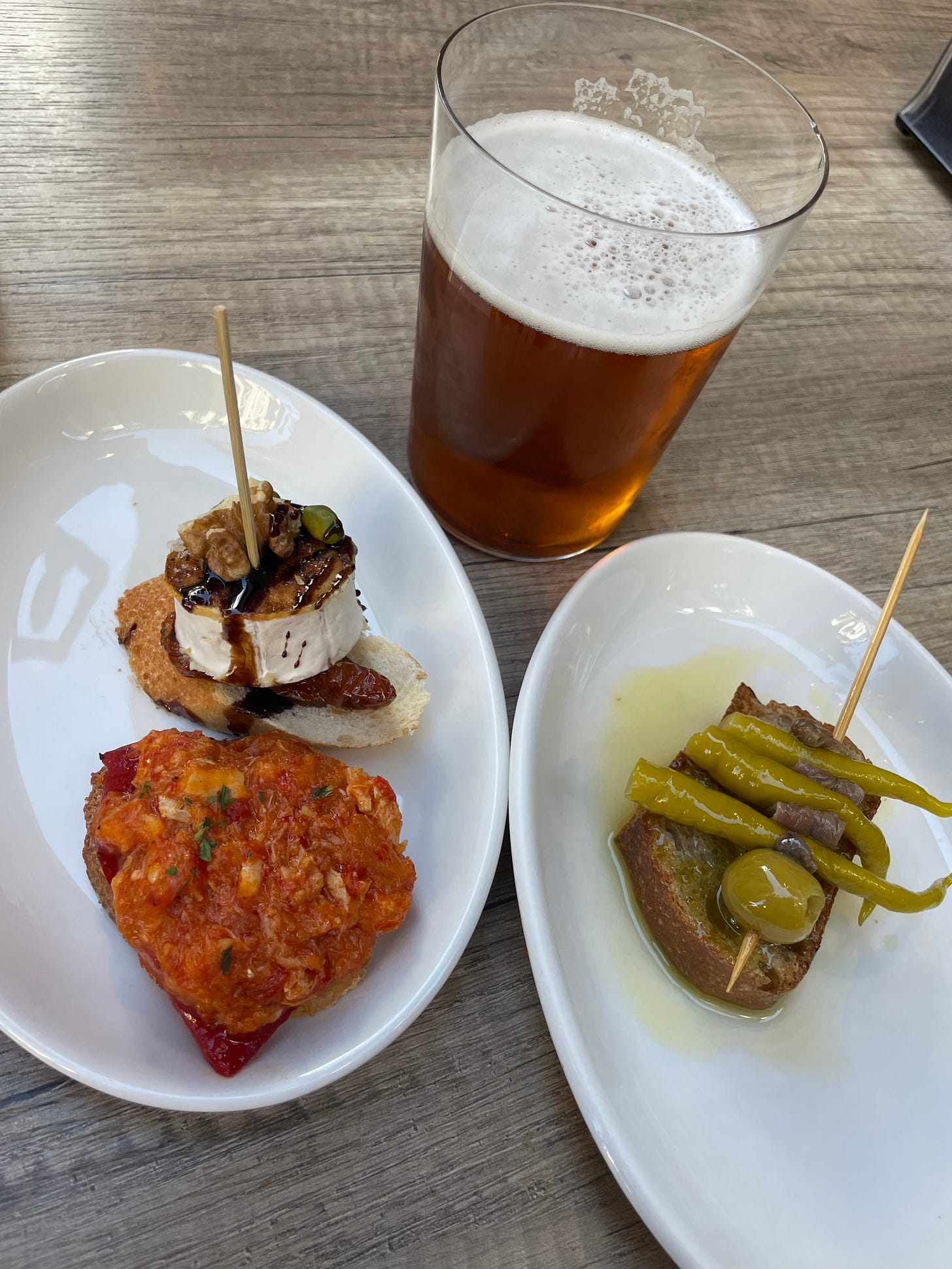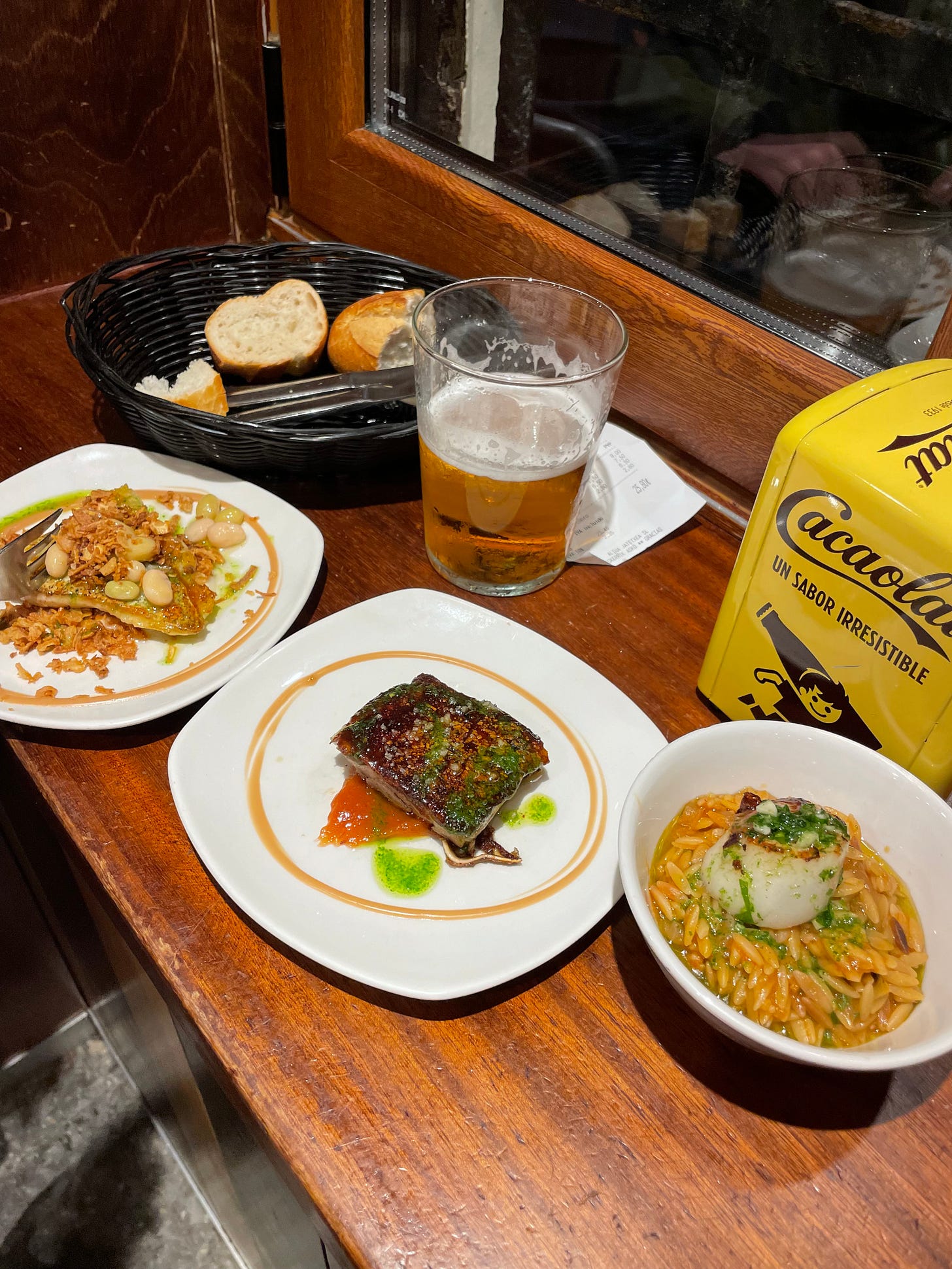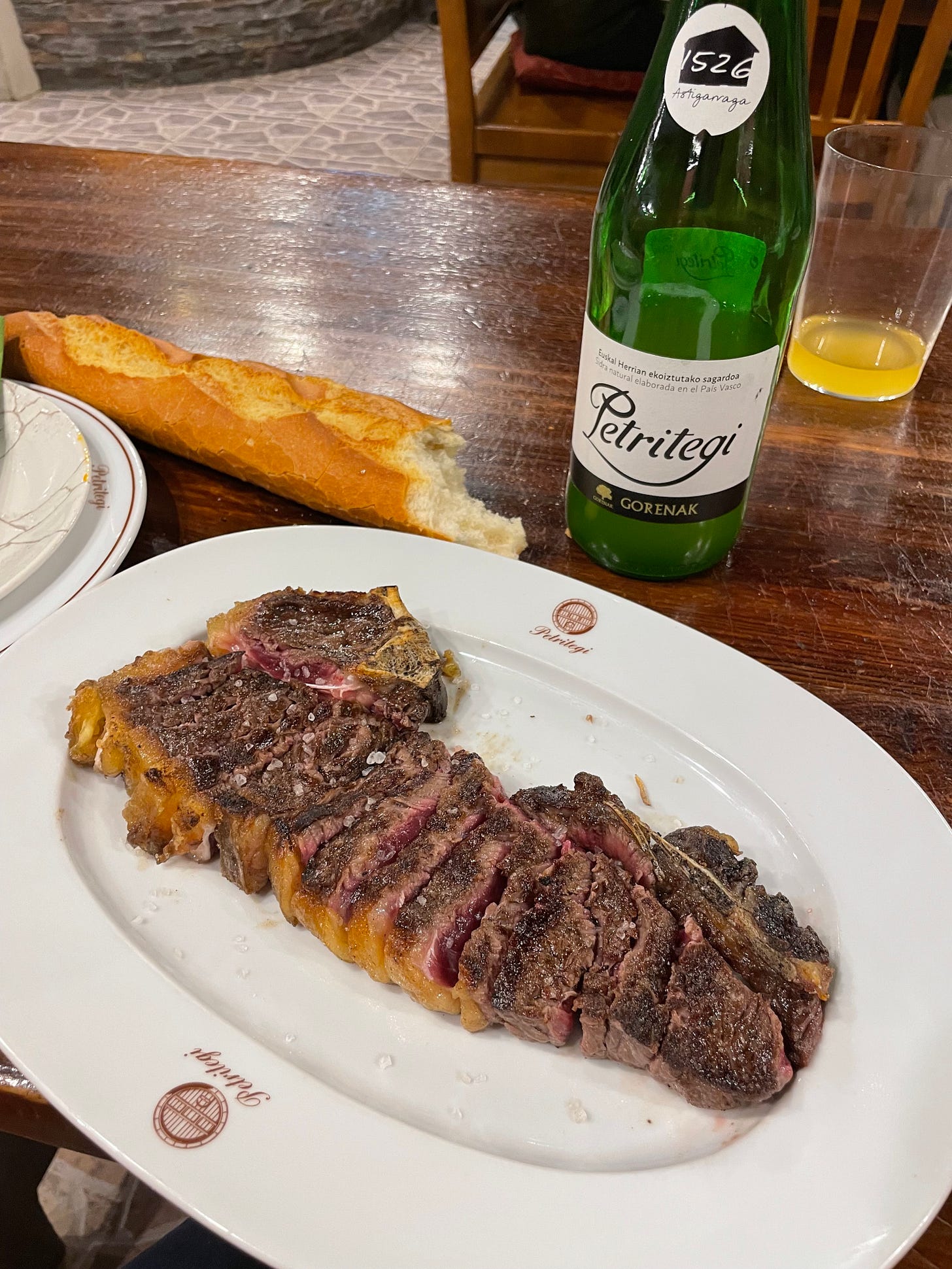Eating My Way Through San Sebastián
San Sebastián is famed for having the largest concentration of Michelin-starred restaurants in the world per square metre. It had been a destination on my list for a while as the ‘foodie infection’ has infiltrated the whole city, meaning you can try some amazing quality pintxos (their version of tapas) without breaking the bank. The city itself is in the heart of the Spanish Basque region. This is an autonomous region with strong cultural traditions and it’s own separate language, a language which is one of the oldest living in Europe and bears no resemblance to any other European tongue. It also has two large beaches, one which has perfect conditions for surfing, so it is great to visit the city in summer when you can also combine the bar-hopping with a beach holiday. I will include a summary with some of my highlights below, but this list should be treated as purely a starting point. The options hidden round these small cobbled streets are endless.
Gandarías
This was my first stop on arriving into San Sebastián and I was eager to get tucked in. I ordered a pintxo topped with caramalised goats cheese, one with red pepper and cod meat, a gilda and a caña, which is about half a pint and the typical way Spaniards drink their beer. Gilda’s originated from San Sebastián and consist of an olive, an anchovy and a pickled pepper all skewered together and are perfect for cutting through the richness of the caramalised goats cheese. I watched as the waiter lovingly spooned dollops of vinegary olive oil from the gilda bowl onto a slice of bread before balancing the gilda skewer on top. I’m a big fan of bread whether it be to sponge sauces up, used as a vessel and base of a dish or to sandwich ingredients together, so I was very pleased that nearly all pintxos’ came sitting upon some.
La Viña
La Viña is the pintxos bar where the burnt basque cheesecake was invented in the late 80s by Santiago Rivera and it is still very much cashing in on this legacy. The queues are long and the cheesecakes are churned out thick and fast from the kitchen. They also cleverly make one portion two enormous slices, therefore justifying the higher price for it, but this means that every gullible tourist is left with excessive cheesecake drooling off their plates. I was expecting a tangy, savoury thickness to the cheesecake but was surprised by how light and creamy it actually was. A visit to la viña is exciting to see the towers of cheesecake balancing on the wall and to feel like you are at the birth place of a cuisine, however I believe this is the primary reason you would visit rather than for the quality of the food itself.
La Cuchara de San Telmo
This was one of my favourite restaurants of the trip and I visited it twice. It’s tucked away down a side street and they have levelled up the standard pintxos of a piece of meat stuck on some bread to offer high quality small plates that feel like a main for only seven euros. They also know how to handle the more unusual cuts of an animal such as veal cheek and this is done through slow cooking to tenderise and bring out the true richness. The picture above exemplifies how basque cuisine has so much to offer, especially as San Sebastian is nestled between the coast, providing fresh seafood, and the green rolling hills which the rubia gallega cows graze on. The dishes we tried in the picture above are fried cod served with beans and crispy onions, suckling pork and a tomatoey orzo topped with a scallop. All of these plates also came with a drizzle of their house cider glaze.
Bar Antonio
Bar Antonio is on the more expensive side of the restaurants we visited, but it is still possible to dine there on a budget if you stick to the pintxos menu. They’re known for their tortilla which not only includes onions, but also peppers which is very daring for Spain as the country is already divided by whether onions in tortilla are a step too far. We did sadly miss the tortilla though as they only make one a day and it had gone by the time we arrived. Pan con tomate is a dish I have tried a lot before, both at home and when I was living in Madrid, but the one served here was by far the best one I’ve had to date. The base was a toasted slice of baguette, then the next layer which is typically grated tomato almost felt like they had confited a whole tomato and this was then topped with bonito tuna, a very long anchovy, a guindilla pickled pepper and then finally drenched in large splashes of olive oil and balsamic. This morsel was a perfect explosion of flavour and texture, crispy yet juicy with tomato, tangy from the vinegar but still rich.
La Mejillonera
I visited this bar the day after I had been ill and the dishes here certainly aren’t for the weak stomached. The one above is a patatas bravas sauce on top of some calamari, so it is almost essential to have a beer alongside that can cut through the heavy layers of grease. The highlight of the show here seems to be the mussels which I sadly didn’t have time to try. The variations are topped with spicy sauces or finely chopped onions, and a vinaigrette dressing. The bar itself has a slightly different feel compared to the other dimly lit restaurants in the city, it has stark white lights, polished metal countertops although it does stick to the same standing-only dining concept.
Petritegi- Cider house
If you have a bit more time on your hands for exploring the outskirts of the city, then I would recommend visiting either a Cider house or a Txakoli vineyard . Both of these traditional Basque tipples are famous for being poured from a height as this helps to aerate the drink, creating a more lively, bubbly drink while dispersing the aromas. It also offers a unique theatrical dining experience closely tied to Basque culinary traditions. If you’re wanting to go on a tour and have a meal at one of these cider houses I would recommend visiting anytime from mid-January to late April. This is when the cider season runs and when the new vintage is opened. On my second day in San Sebastian I decided to venture out to the cider house Petritegi. I got the city bus as far as it would go then had to walk the last twenty minutes through dilapidated allotments and under heavy industrial motorway bridges. I had opted to take the tour of the site in Spanish to throw myself in the deep end, and it definitely felt like I had as the rest of the group were native speakers, making jokes amongst themselves that were going straight over my head.
Petritegi dates back to 1526 and cider itself is an age-old tradition in the Basque region as it was the main drink that Basque fisherman would take with them on their long cod-fishing expeditions round Greenland and the Newfoundland. The apples used for making cider are different to eating apples and leaving the skin on is an essential part of the process. This is where the natural occurring yeast is found that is needed for the fermentation. We started our tour with a tasting followed by a video showing the traditional method of crushing the apples under foot, just as is done with wine. After this we went out to the apple groves and were shown the implement used to collect the apples at speed. It is a sharp nail stuck to the end of the wooden post, and the pickers compete in summer to see who can collect them the quickest. The next stop on the tour was the cellar where we saw the enormous oak barrels, eerily named the twelve disciples. Photos of peoples legs sticking out of the tiny holes in the barrels were pointed out to us as when the batch is swap, someone has to squeeze through the tight gap to manually clean it. As shown in the video below we then got to taste the cider straight from cask, holding the glasses from afar to ensure that the cider was sufficiently aerated and bubbly. Basque cider is much more dry and acidic when compared to English cider which can be very sweet and fruity. Basque cider also uses natural fermentation, from the wild yeast present on the apple skins, rather than yeast additives which can give it its tangy flavour.
The final part of the experience was the lunch, which was a four course meal that consisted of fried cod with peppers and onions, salted cod (bacalao) omelette, the famous basque txuleta steak, cheese, quince and walnuts which was all washed down with a bottle of the house cider. Salt was the common denominator throughout this meal as all of the cod had been preserved by drying it out with salt, and even the steak was only seasoned with large salt crystals after it has been grilled. The txuleta steaks are becoming more popular in England with restaurants focused on Basque cuisine such as Sagardi opening up in London. It also surprisingly uses older, fatter ex-dairy cows and because of this it has its distinctive marbling and almost butter like rind fat. Aside from learning more about the Basque culture directly through its cuisine, I also had the pleasure of being sat next to an eighty-year old Basque couple who were keen to tell me more about local life. They were visiting the cider house to restock their bar at home and the picture they painted seemed pretty idyllic, living with their children and four grandchildren while producing all the meat they eat on their farm. The husband also fitted the stereotype of the proud Basque man as when I asked if they had watched the famous film ‘Ocho apellidos vascos’* Eight Basque Surnames, he replied saying, “I have thirty-six.”
*In Spain, you inherit both your mother's and father's surnames, and this pattern continues through generations. Therefore, having thirty-six Basque surnames suggests a deeply rooted Basque ancestry.









